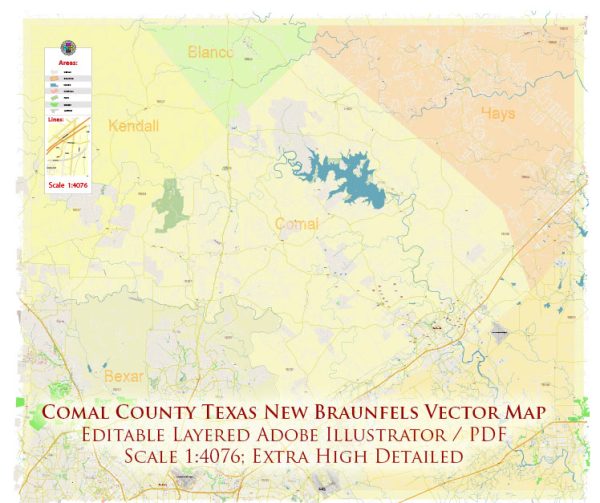Comal County, located in central Texas, has a rich history of urban development that reflects the broader patterns of settlement and growth in the region. The county seat is New Braunfels, which has played a central role in the county’s development. Here is an overview of the urban development history of Comal County:
- Early Settlement and New Braunfels: The history of Comal County dates back to the mid-19th century when German immigrants, under the leadership of Prince Carl of Solms-Braunfels, established the town of New Braunfels in 1845. The town was strategically located along the Guadalupe River and served as a hub for incoming settlers.
- German Influence: The German immigrants brought with them a strong cultural and architectural influence, shaping the character of New Braunfels and the surrounding areas. The distinctive German-style architecture is still visible in some of the historic buildings in the downtown area.
- Economic Growth and Industry: As with many areas in Texas, the arrival of the railroad in the late 19th century played a crucial role in the economic development of Comal County. The railroad facilitated the transportation of goods and people, boosting economic activity and attracting industries to the region.
- Tourism: The natural beauty of the Texas Hill Country, including the Guadalupe River and Canyon Lake, has made Comal County a popular destination for tourism and recreation. Tourism has been a significant factor in the urban development of the county, leading to the establishment of hotels, restaurants, and recreational facilities.
- Population Growth: Over the years, Comal County has experienced steady population growth, with people attracted to the area for its natural amenities, strong economy, and proximity to San Antonio and Austin. The growth has led to the expansion of urban areas, the development of residential neighborhoods, and the establishment of commercial centers.
- Education and Institutions: The presence of educational institutions, including Texas Lutheran University and the New Braunfels Independent School District, has contributed to the county’s growth and development. These institutions have not only provided education but also played a role in shaping the cultural and social fabric of the community.
- Infrastructure Development: Modern urban development in Comal County includes the establishment of modern infrastructure such as roads, utilities, and public services. As the population has grown, there has been a corresponding need for updated infrastructure to support the community’s needs.
- Preservation Efforts: Efforts to preserve the historic character of areas like downtown New Braunfels have been ongoing. Historic districts and landmarks showcase the county’s heritage and contribute to its appeal as a destination.
Comal County’s history of urban development reflects a blend of cultural influences, economic factors, and natural attractions that have shaped the region into a vibrant and growing community. The balance between preserving its rich history and embracing modern development continues to be a key consideration for the county’s future.


 Author: Kirill Shrayber, Ph.D.
Author: Kirill Shrayber, Ph.D.